Bryan Pearson's Blog, page 3
April 20, 2019
7-Eleven, Wawa And 4 Inconvenient Facts Supermarkets Should Learn About C-Stores
They sell roller-grill hot dogs. They sell Twinkies. And now they sell organic cold-pressed juice. The few extra minutes the shopper gets to keep — those the convenience stores are giving away.
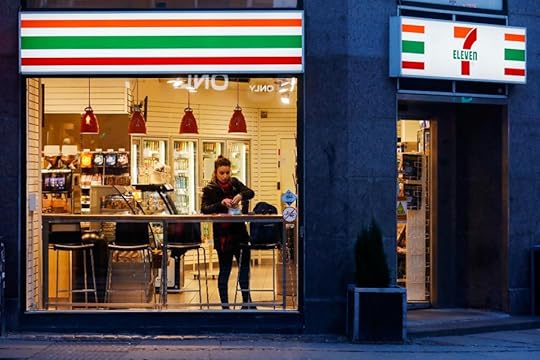 photocredit: © 2019 Bloomberg Finance LP
photocredit: © 2019 Bloomberg Finance LPAnd this is why convenience stores are able to crowd into supermarket territory with the sale of fresh and prepared foods. Responding to the demand for healthier grab-n’-go fare, more convenient stores, including Wawa, 7-Eleven and Pilot Flying J, are stocking up on fresh fruits, organics and just-prepared meals. Some are even partnering with celebrity chefs.
In doing so, the industry is proving it could grab and go with more than a small portion of the supermarket industry’s market share. Fruit and vegetable sales alone generate nearly $240 million annually among the sector, according to the National Association of Convenience Stores. Total sales among c-stores rose nearly 9% in 2018, to $654.3 billion.
That represents the 16th consecutive year for record in-store sales.
Yes, They Have Bananas — Organic Bananas
By some predictions, that c-store growth is sustainable. By 2026, convenience stores and other non-traditional food sellers could capture $200 billion to $700 billion in grocery sales, according to a recent report by McKinsey.
Supermarkets are catching on; some are adding small-format locations and near-the-door grab-and-go options, and click-and-collect is pretty much standard. Kroger, before selling its 762-convenience store operations in 2018, appears to have installed convenience store amenities within its supermarkets: Some include food court-style areas with counter-front offerings that range from BBQ to Mexican.
 photocredit: The Washington Post/Getty Images
photocredit: The Washington Post/Getty ImagesThese efforts indicate that supermarkets recognize that convenience stores aren’t simply promising ease and speed; they’re on a quest for supermarket quality, or better. Here are four key ways c-stores are putting it on display:
They’re not just getting fresh, they’re getting creative about it. Innovative new products and fresh-food combinations are helping c-stores stand apart from the usual fare. In 2017, 7-Eleven added organic cold-pressed juice blends to its healthy private-label brand, called 7-Select Go!Smart. The juices, which include kale, cucumbers and apples, are fair-trade and shelf-stable. The creative offerings of 7-Eleven’s Go!Yum line, which include banana cream pie ice cream, may also tempt shoppers. And Pilot Flying J stores is in partnership with celebrity chef Tim Love, founder of the Austin Food & Wine Festival, to develop the PJ Fresh Marketplace brand of fresh-ingredient fare.They’re well prepared. By adding variety and quality to their deli cases, convenience stores are transforming into formidable prepared-meal destinations. Wawa customers can customize their sandwiches, meal bowls and breakfasts via touchscreens with a variety of options from avocado to pickled jalapeno peppers. All items are built to order, including straight-up offerings like the garlic aioli brisket sandwich. At the Pennsylvania chain Sheetz, the made-to-order touchscreen menu includes mac-n-cheese platters, a steak and “fryz” salad and fish wraps. And Casey’s General Stores in the Midwest operates in-house bakeries and pizzerias (that deliver).They’re redefining value. Shoppers are striving to save money, but they also want to save time, and at times, they’ll pay more for it — as much as 11% more. That’s what shoppers will shell out for one added layer of shopping convenience, research shows. And if time-savings is considered a convenience, than convenience stores have it cornered. The typical grocery store trip takes 41 minutes. The average time shoppers spend while in convenience store/fuel stations is seven minutes and 40 seconds — and 45% of shoppers spend five minutes or less, according to a 2018 report by GasBuddy, an app that locates the best gas prices.They are even more convenient than you think. Many convenience stores, including Wawa, 7-Eleven and Circle K offer online pickup and app-enabled mobile ordering. Some apps, including Circle K’s, are linked to reward programs. The digital option is likely to become standard, perhaps before the end of 2019: In 2018, 61% of millennials shoppers said they used mobile ordering in convenience stores. And let’s not forget the power of the fuel factor. Convenience stores sell about 80% of all gas in the United States, Nielsen reports. According to the National Association of Convenience Stores, more people choose where to refill based on the quality of a station’s convenience store.
In a nutshell, convenience stores live up to their names. If hurried shoppers want fresh-blended fruit smoothies and app-ordered waffle-and-egg sandwiches, then the c-stores will make it so – all while filling the tank. Supermarkets may have fast online pickup, and fresh prepared meals, but the gas hoses won’t stretch that long.
April 13, 2019
Why Can’t Amazon Convert Prime Shoppers Into Whole Foods Shoppers?
If one were to place Amazon Prime and Whole Foods shoppers into a Venn Diagram, the two circles would best be represented by an apple and an orange. And the overlap slice is not nearly as big as Amazon would like.
 photo: Bloomberg
photo: BloombergSince
acquiring Whole Foods in 2017, Amazon has pursued its plan to expand into
grocery, and an important element of that plan is converting Prime Members into
Whole Foods shoppers. Among its efforts: Amazon has added Amazon Prime pickup
within Whole Foods stores, offered two-hour Whole Foods grocery delivery to
Prime members (free on orders of more than $35), and it has reduced prices at
Whole Food, while giving Prime members an additional 10% off on sale items.
Yet
70% of Prime members say they rarely
or never shop at Whole Foods, according to a recent survey by Wolfe
Research, and just 18% shop at
Whole Foods at least once per month. In contrast, 65%
of Prime members shop Amazon’s website at least several times a month.
Amazon’s
latest effort to improve those numbers: On April 3, Whole Foods began cutting
prices on hundreds of items, offering special
discounts to Amazon Prime members.
With each of these moves, Amazon is nudging
the apple and orange to overlap more, but the common elements indicate it has
challenges beyond price.
Prime
Conversion: 4 Vexing (And Venn) Challenges
What gives? It turns out price reductions
won’t be enough to convince Amazon Prime shoppers to venture into a Whole
Foods. Here’s why.
What once set Whole Foods apart is now commonplace, and cheaper. Organic foods are now mainstream, meaning Whole Foods is no longer the go-to for natural bites. According to the Organic Trade Association, 2017 sales of organic food and non-food products rose 6.4%, to $49.4 billion. And the top rivals are surprising: In 2015, Costco surpassed Whole Foods as the No. 1 seller of organics. Today, it’s a tight race for leader: Kroger’s Simple Truth private label is now a $2.3 billion brand. And Aldi plans to expand its fresh food selection by 40%.The bananas could brown on the drive home. Whole Foods operates 477 stores in the U.S. Kroger operates more than 2,764. This means that in many markets Prime members would have to travel a decent distance (passing a lot of other options) before reaching a Whole Foods store. Even if they want to try Whole Foods’ 365 Everyday Value house brand, a lot of shoppers might not have the time to drive to the nearest location. Shoppers can order online and have the goods delivered, but lack of proximity still eliminates unplanned and quick trips.Amazon’s selection is devouring some of its opportunities. Online, Amazon’s wide range of offerings may compromise Whole Foods ability to compete. Amazon controlled 18% of U.S. online grocery sales from 2017 to 2018, according to a 2018 report by One Click Retail. That’s the largest share by any single retailer. However, while the addition of Whole Foods likely contributed to the growth, a lot of those sales were generated by other brands. The One Click report states that growth occurred across nearly all grocery categories, led by cold beverages. True, they aren’t all organic, but these products still consume a limited grocery dollar. Amazon’s top seller in the second quarter? Original Donut Shop coffee — not a Whole Foods product.Quality counts as much as price, and more merchants are delivering it. With the mainstreaming of organics comes quality. Some retailers, including Costco, have been pinged for selling factory-farmed organics. Specific product sourcing may not matter to casual organics buyers, but dedicated shoppers pay attention, and this has aided competitors that focus on food origin and quality. Thrive Market, for example, has been described as “Costco meets Whole Foods,” with private label products comparable in quality to those of Whole Foods. Thrive is mail order, but ships in two days like Prime, and its annual fee ($60) is often offset by credits it gives shopper on their first few orders. More retailers are appealing to our charitable sides. Research has shown that giving to others makes people feel healthier. Those who buy organics and natural foods usually are health-conscious, so there may be a correlation. Most retailers, Whole Foods and Amazon included, operate charitable divisions or offer easy ways to donate. Still, giving back is a way to stand apart and the more it is entwined into the business model, the more likely it will hook the altruistic shoppers. Each Thrive membership, for example, helps sponsor a membership and shopping credit for low-income families, students, teachers, veterans and first responders.
Finding the similarities
between Amazon and Whole Foods shoppers makes sense, but if Amazon were
comparing apples and oranges, there may not be enough similarities to outsell
the competition. Amazon may need to turn to its rich wealth of shopper data, or
directly survey its best Prime shoppers, to learn what would persuade them to shop
with Whole Food over others, beyond price.
For that, Amazon will need
a carrot.
April 9, 2019
Final Four Of Mass Retail: The Battle Of Walmart, Kroger, Amazon And Target
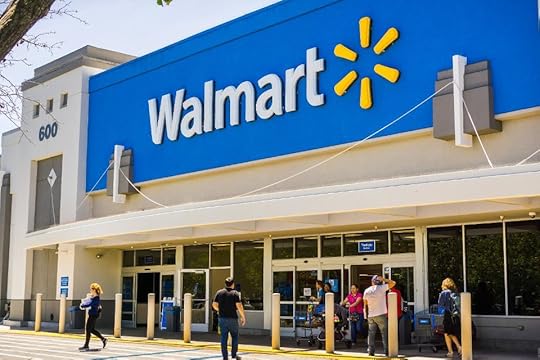
photocredit: Getty
If this year’s Final Four tournament involved mass merchant retailers instead of college basketball teams, my bracket would look like this: Walmart, Kroger, Target and Amazon.
In the tournament for retail dominance, these four are battling it out in grocery, apparel, beauty and home, and in many ways with skills similar to those of promising basketball players. There’s speed, agility and dazzling plays to enthrall the crowd, but also team strategy and execution to score the most loyalty.
If Kroger, Walmart, Target and Amazon were to face off, this is how those games might just play out in four brand-defining categories.
Kroger Vs. Walmart
Here we’ve got the largest traditional grocery company, Kroger, with $121 billion in sales, against the largest overall retailer, Walmart, with $514 billion. Let’s break it down.
Online grocery delivery: Kroger offers curbside pickup, a self-checkout app and one-day delivery by cute robot cars. But Walmart edges it out on grocery delivery, according to research firm Gartner L2’s Grocery U.S. 2019 Digital IQ Index. It places Walmart in the rare “genius” category for features including websites and e-commerce, digital marketing and mobile. Walmart has, for example, separated grocery from the main offerings on its website and app and added hundreds of online order Pickup Towers. Walmart scored 140 on the Gartner L2 index, while Kroger scored 134.
Private label: Kroger has been manufacturing its own foods since soon after its founding in 1883, and today the portfolio represents 30.5% of all products sold. Walmart launched its first private label, Ol’ Roy dog food, in 1983 and has since taken a multi-pronged approach. It partners with Lord & Taylor, acquired Bonobos, Bare Necessities and other labels, launched the furnishings brand Modrn, and is now hinting at a private-label tablet. It’s a close score: Nearly equal percentages of Walmart and Kroger shoppers buy their respective private labels (84% and 83%), but Kroger’s brands are more home grown.
Stores: Walmart has 5,355 locations; Kroger has 2,764. Walmart’s portfolio includes Walmart Supercenters, discount stores, Neighborhood Markets, small format stores and Sam’s Clubs. Kroger operates supermarkets, multi-department stores, warehouse clubs and convenience stores under 30 banners. Kroger’s banner mix reflects its long history of acquiring retail chains and learning their best practices, from catering to high-end urban markets (Mariano’s) to selling in non-food categories (Fred Meyer). So while Walmart has more stores, Kroger’s store formats cover more ground.
Experiential services: In addition to prepared meals and other now-essential offerings, Kroger’s diversity — in formats and nameplates — enables it to test eateries, cocktail bars and live music. It operates its own Culinary Innovation Center and introduced a company-run restaurant, Kitchen 1883. Walmart is better known to house a McDonald’s or Subway, but recently announced plans to develop eight open-air retail centers, to be called Walmart Town Centers, that will include restaurants, food halls, recreational activities and, yes, Walmart Superstores. This game is still in play.
Amazon Vs. Target
It’s a bit of a lopsided match, but Target’s talent for partnering with designers for exclusive offerings should not be underestimated.
Online grocery delivery: In this category, Gartner L2’s index calls Amazon the clear winner, with a score of 144. Its acquisition of Whole Foods, combined with its Prime membership program, is likely the key to this ranking, having enabled Amazon to offer free grocery pickup at Whole Food stores as well as free (for Prime members) three-hour grocery delivery. Target is making a fast break for online domination, however, with its expanding Drive Up service that allocates delivery parking spots for shoppers so they never have to leave their cars. Gartner gave Target a score of 139 (even edging out Kroger).
Private label: Target long ago broke from the retail pack by forging exclusive relationships with hot designers, but since 2016 it launched 20 of its own brands in apparel, home decor, consumer products and electronics. Amazon uses purchase data from its website to develop competitive in-house brands, and to date offers nearly 135. However, research indicates only the brands with Amazon in the name resonate with shoppers: “Amazon’s private label efforts have been given too much credit,” Juozas Kaziukėnas, founder of Marketplace Pulse, wrote in a report released in March. “Outside the outliers like AmazonBasics batteries, most brands launched didn’t do well.”
Stores: Target operates more than 1,800 stores in the U.S. Amazon operates roughly 500, including its nearly 450 U.S. Whole Foods locations (but excluding Amazon pop-ups and kiosks). Other Amazon stores are Amazon Go, Amazon 4-Star and Amazon Books. Both retailers are testing new formats and concepts. Target is investing in smaller-format stores in urban areas and college campuses, or reformatting stores for easier online pickup. Amazon reportedly is planning to open dozens of grocery stores through acquisition in an effort to strengthen its supermarket brand. It’s a tight match.
Experiential services: Amazon Go redefined the in-store shopping experience by enabling customers to enter, select products and leave without so much as having to stop, let alone visit a cashier. Target’s offensive moves include delivering online orders to customer cars and ambitious remodels. It is updating nearly 1,000 locations and no two will be alike other than one distinct feature: An entryway designated for easy in-and-out trips, including grab-and-go groceries and online order pickup. The other entryway, designed for “inspiration,” will lead shoppers to boutique-like departments, such as beauty sections laid out like specialty stores. This game, as well, is still in play.
And The Winner Is …
Without a question, the winner in this or any retail playoff is the shopper. Kroger and Walmart, Amazon and Target, like the college teams in the real Final Four, will continue to compete and occasionally outplay each other in certain categories.
Where they rank will shift, but it will all be for the shopper’s benefit and, hopefully, loyalty.

April 5, 2019
No Fooling On These Retail Facts: 10 Surprising Truths About Starbucks, McDonald’s And Walmart
Neiman Marcus sells submarines. Is that for real, or is it for April Fools?

photocredit: ASSOCIATED PRESS
Whichever it is, it won’t likely stay that way for long, which is why April Fools’ Day may be a holiday lost on retail. Every day, merchants test futuristic concepts and take substantial risks to wow us, from shoe elevators (real, at DSW) to pillow rentals (West Elm and Rent the Runway). Would it be so weird to sell submarines, if there are people out there wanting to buy them?
And from those efforts to please spring some unusual retailer facts that are, indeed, true. In the spirit of April Fools’ Day, here are 10.
1. Barneys runs a Hollywood head shop. Luxury retailer Barneys New York in March opened a boutique dedicated to selling cannabis products, in Beverly Hills, California. The store, called The High End, dubs itself a lifestyle and wellness concept shop featuring custom-blown glass bongs and pipes, luxury rolling papers, jewelry, CBD-infused beauty products and a $1,500 sterling silver pot grinder. No word on whether Barneys is trafficking in Mallomars, but we have high hopes. Barneys is planning on more locations.

2. Trader Joe is German. Though founded in 1959 by Californian Joe Coulombe, Trader Joe’s today is owned by the same German family that founded Aldi. However, they are separate companies, the result of a fallout between brothers Karl and Theo Albrecht. In the split, Karl got Aldi Süd (southern Germany and the United States) and Theo took over Aldi Nord (in northern Germany). The arrangement prevented Theo from opening Aldi stores in the U.S., so he acquired Trader Joe’s in 1979. Theo died in 2010, and Joe’s remains a subsidiary of Aldi Nord.
3. CVS fills seven prescriptions for every American annually. Drug store chain CVS Health fills or manages roughly 5 billion prescriptions a year. That’s nearly seven prescriptions annually for every man, woman and child in the U.S. The dispensing doesn’t quite work out that way, however. Rather, CVS’s pharmacies serves an average of 5 million people daily, which shakes out to 1.8 billion people served a year (take that McDonalds!).
4. McDonald’s is banned in 10 countries. McDonald’s actually sells more than 75 hamburgers a second, but not in North Korea, Iran, Jamaica, Barbados, Bermuda, Macedonia, Bolivia, Ghana, Zimbabwe and Montenegro. These countries have banned the fast food chain from entry, but that has not stopped McDonald’s from being one of the largest owners of retail property in the world. It owns an estimated $30 billon in real estate, generating a profit of $4.5 billion, which is likely more than it makes from burgers.
5. Neiman Marcus trades sales for sails. The high-end department store’s annual Christmas Book catalog is known to feature outlandishly extravagant gifts, from a Dolce & Gabbana toaster to a three-day espionage adventure in Las Vegas. But in 2018 Neiman went overboard: It featured a 74-foot, one-of-a kind yacht, with a full kitchen, satellite TV, wi-fi and (perhaps best of all) ample closet space. Neiman called it the largest solar-powered yacht in the world, which may justify the price tag of $7.1 million.
6. There are enough Starbucks Rewards members to populate Florida. The My Starbucks Reward program includes nearly 22 million Americans, edging out the population of Florida by about 350,000 (which is the population of Honolulu). Those memberships represent close to 7% of the U.S. population, and many are new — enrollments rose 18% in the fiscal fourth quarter of 2018. Of those memberships, 7.3 million are active, or are used within 90 days.
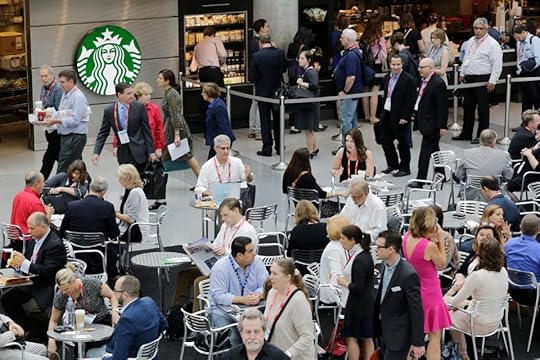
7. Crate & Barrel is as old as Walmart. Despite its youthful, contemporary look, Crate & Barrel was founded in the same year as more conservative-seeming Walmart: 1962. Turns out 1962 was a good year for retail. In addition to Walmart and Crate & Barrel, Kohl’s, Pier One Imports, Wet Seal and Rite Aid were founded in that year, and the first Target store opened as well (by the Dayton Co.). Despite how young they look, all chains are older than the founder of their leading rival, Amazon — Jeff Bezos was born in 1964.
8. Amazon’s first sale was in computer science. The first book Amazon sold, on April 3, 1995 (when Bezos was 31) was Fluid Concepts and Creative Analogiesby Doug Hofstadte. The book, a study of computer modeling and the mechanisms of intelligence, set off the first ringing of an actual bell that Amazon workers used in the early days. Within a month, Amazon sold at least one book to shoppers in each of the 50 states and eventually retired the bell.
9. Macy’s had first dibs on happy hour. When the National Prohibition Act was lifted in December 1933, the Manhattan department store R.H. Macy & Co. ordered up, and received, the city’s first liquor license. Today, Macy’s customers from across the country can buy wine from the retailer, through its online Macy’s Wine Cellar Club.
10. Target outlaws Girl Scouts. Well, not exactly outlawed, but Target does follow a no-solicitation rule that prevents Girl Scouts and other third parties, including the Salvation Army, from hanging out at its entryways. The purpose of the rule is to provide customers a “distraction-free shopping experience.” Target has found a middle ground with the Salvation Army by supporting the charity in other ways, and it gives 5% of its profit to local communities.
Retailers continuously generate more surprising facts, and some may look foolish in years to come. In December 2016, for example, Nordstrom sold out of a leather-wrapped rock that went for $85. (Bet that was an interesting holiday for many.)
As for Neiman Marcus and its holiday surprise — the company did feature a submarine in its 2007 Christmas Book, for $1.4 million.
March 30, 2019
Springing For Purchases: 8 Ways Warm Weather Encourages Shopping — And Where
Never underestimate the purchasing influence of a daffodil.
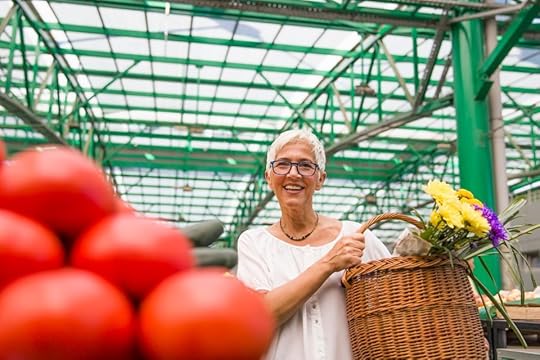
As consumers emerge from their month’s-long hibernation, jostled out of their comfort-food stupors by late-day sunlight and early morning bird song, they rediscover not only the deep-rooted need to be out of doors among the flowers, but also the complementary urge to throw money at that need.
There’s the typical stuff we buy — sandals, grills and flats of pansies. But several unique traits of early spring trigger behavioral changes that cause shoppers to splurge on items they would not have expected. Following are eight such peculiarities of the season.
April showers bring digital dollars: In rainy regions in particular, consumers tend to use soggy afternoons for online shopping. Website traffic on home furnishings and clothing sites rose 10% to 12% during rainy days in Seattle, compared with on sunny days, one study found. And speaking of showers, April tends to be a busy month for the bridal kind, as June is one of the most popular months for weddings (bridal showers are customarily hosted one to three months before the wedding). And guess where a lot of those bridal registries are made? Online.Baby bumps: More babies are born in September than in any other month, meaning that in April, five months earlier, those baby bumps will begin to show. This momentous life stage triggers not only an uptick in maternity clothes purchases but in toys, tiny shoes and other irresistible baby items (by family and friends as well as moms-to-be). This life stage also triggers cravings — spring is a good time for ice cream makers to introduce their latest salt-infused flavors.
Wearing less is more enticing: Warm-weather apparel is encouraging and aspirational — it gets us daydreaming about summer parties, outings and vacations. And it makes sense (we tell ourselves): Purchasing shorts, swimsuits and sandals in the spring is like contributing to a sunny-day fund. But this is what’s different: Shoppers are investing in warm-weather items earlier in the season, according to research by Edited, a global retail analytics company. New arrivals of swimwear peaked in April of 2018, with nearly 1,000 more new styles at retail than in April 2016 and 2017.Daylight savings: If the sun is out when people leave work, they are more likely to stop at a store or two on the way home, research shows. If it’s dark, they’re more like to drive straight home. For this reason, some states, including Massachusetts and Florida, have looked into extending daylight savings year-round, and abolishing daylight standard time, when we set the clocks back, in the fall.Spring cleaning: Thank organizational whiz Marie Kondo for high levels of house-purging this spring. But all of that clearance will inspire people to organize and brighten their homes, as well. So in addition to traditional cleaning products, mops, buckets and other supplies, people will likely be hunting for shelving units, decorative hooks and window treatments, all of which could lead to unplanned home improvement projects. This may be why home furnishings retailer Wayfair is offering discounts on 23 home renovation items through April 2.More foot traffic: People are on their feet more frequently and for longer periods of time when it’s warm, which is especially beneficial for small independent shops that operate in standalone locations on the sidewalk. Foot traffic in general motivates activity purchasing as well — from water bottles and energy snacks to arch-supporting socks and doggie strollers. Couches require a blanket and a remote control; movement requires gear.Sunny moods: Some retailers reportedly use bright halogen lights to mimic sunlight in their stores, but the real thing inspires more creative purchases. People tend to feel more optimistic in the sunshine, opening their minds to fresh experiences and even risks. New purchases fall into this category, from kayaks and outdoor activity gear to backyard lighting systems. Home Depot reports that its gardening department historically represents 15% to 20% of first quarter (February to April) sales.And we’re still shopping for winter. S. Eliot’s poem about April being the cruelest month (“stirring dull roots with spring rain”) translates in the aisles, as stunned consumers find themselves purchasing ice-melting salt and flower beds in the same trips. But location matters: An eight-degree drop in mid-April temperatures will cause outerwear sales to jump 35% in Phoenix but just 9% in Chicago, according to Planalytics, a consultancy that specializes in how weather affects retail.
Further, weather only repeats itself year to year about 15% of the time, so there’s no point in precisely planning this spring’s purchases based on last spring’s calendar, and the same goes for 2020. When it comes to planning around the volatility of the season, it’s best to keep the big trends in mind, live in the moment and smell the daffodils.
March 19, 2019
Will Consumers Rent Home Furnishings? Ikea and Rent The Runway Think So.
Welcome to retail 2019, when no sale is ever final.

GETTY
From monthly rentals to circular product swapping, more retailers are catering the whims of shoppers who are inclined to invest in what they fantasize their homes and lives to be for occasions, but not for-ever.
Rent The Runway spotlighted this purchasing proclivity with its recent expansion into reusable home furnishings through a partnership with West Elm. Rent the Runway follows Fernish, whose Seattle and Los Angeles subscribers can rent, trade and buy individual furnishings or curated collections. And companies such as Joymode sell rental subscriptions for items ranging from martini kits to pizza ovens.
Big brands are eyeing the concept as well: Ikea is planning a furniture leasing program in Switzerland.
Furniture is just an indicator, however. Borrowing is not low-rent; it’s high style, regardless of the items changing hands. It’s swapping — a term very palatable in the widely accepted sharing economy. Temporary purchasing in fact shares many characteristics of the sharing economy, which indicates more product categories will be absorbed into this model of consumerism.
Temporary Vanity: The Psychology Behind Interim Ownership
By extending from apparel to the home and beyond, retailers suggest the prognosis for the borrowing economy’s longevity is better than that of the products involved.
That it seeks to extend the lifecycle of the products traded is fitting, considering its origins exist, in part, in the fast-fashion craze made possible by low-priced, uber-trendy chains such as Forever 21. Twenty years later, conscientious shoppers are less comfortable contributing to the world’s growing waste problem. Merchants spotted the opportunity and rentals became vogue — a feel-good, feasible alternative for a post-recession population.
Psychologically, temporary ownership appeals because it feels as if we are investing in experiences, not ownership. Materialism is increasingly viewed as a yoke — it could even suppress joy, as demonstrated by millions of fans of Japanese organizing consultant Marie Kondo. But an ongoing, sharing relationship with a trusted person or brand, that’s community building; it’s healthy. The disposable becomes indispensable.
And it’s lucrative. The resale market alone is expected to generate $41 billion by 2020, while the sharing economy is projected to reach $335 billion by 2025.
Swapping In Focus, From Land To Sea
Those projections borrow from the belief that sharing, renting and swapping will extend into a variety of categories, such as the large home furnishings sector.
Rent The Runway’s partnership with West Elm enables shoppers to rent “bundles” of pillows, throws and other decorative items for the bedroom and living room, and then return or purchase them after 30 days. And Ikea’s Swiss-based leasing test, which will begin with office furniture, is motivated by a strategy that can easily jump borders: It just wants to prolong the life if its furnishings.
Among merchants that are taking the leap outside of furniture and apparel:
Green Piñata: This educational toy club ships boxes of playthings selected from a catalog organized by curriculum. For $25 a month, parents can select four toys by age group (six months to five years) as well as play skill, such as cognitive or social. The child can play with the toys for as long as he wants before returning for a new box (shipping is free), and parents have the option to buy the toys.
Getaround: This free membership service links drivers to a range of cars, from Toyotas to Teslas, that they share with nearby renters for as little as $5 an hour. All rentals include insurance and roadside assistance. Those who rent out their cars through Getaround get dedicated parking spots and $50 monthly driving credits toward their own rentals.
Parachut: Designed for creative people who might not be able or willing to invest in expensive camera gear, Parachut rents outs high-end equipment from individuals, manufacturers and brands. Subscribers can use the gear as long as necessary, paying daily rates. A Mavic Pro drone, for example, rents for $7 a day. Parachut “pros” are available to help users.
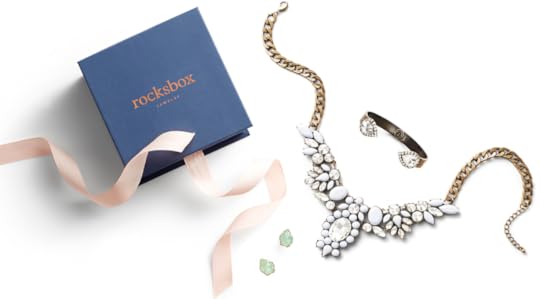
Rocksbox: Movie stars borrow diamonds for the red carpet, so why shouldn’t everyday people sport temporary baubles at a party? For $21 a month, subscribers build wish lists of items from a catalog of thousands of designer and exclusive pieces. A personal stylist then selects three pieces for the member to rent as long as she desires. If the member falls in love with a piece, she can apply the $21 fee to its purchase.
Antlos: An actual peer-to-pier marketplace (sorry), Antlos enables those who want yacht vacations to take them, without spending millions. Its yacht “Skippers” operate from the Caribbean to Croatia, and every boat comes equipped with an on-board captain (or skipper). The renter does not even have to know how to sail. Not all boats are yachts — one recent search turned up a catamaran, available in Greece, for $403 a day per guest.
What is consistent across all of these services is users have the option to own what they rent. But even then, shoppers should think about their product’s next life. Because somewhere, there will likely be a service or merchant prepared to re-enter these items into the economy, to be refurbished, rented or shared without the commitment of ownership. No sale, or experience, will be final.
This article originally appeared in Forbes . Follow me on Facebook and Twitter for more on retail, loyalty and the customer experience.
March 15, 2019
The Real Victims of Amazon’s New Grocery Stores? Nabisco, Kraft And P&G
The Jolly Green Giant, Tony the Tiger and the Keebler Elves have co-existed harmoniously in groceries, superstores and warehouse clubs for generations. But they may not survive the Amazon.

GETTY
If Amazon opens a chain of grocery stores, as The Wall Street Journal reported, the most vulnerable competitors won’t be Kroger, Target and other supermarket chains. Rather, Kraft, Nabisco, Coca-Cola and similar makers of the brands that fill grocery shelves stand to lose the most. Or they stand to gain the least.
Amazon likely would carry a large number of private-label goods, a strategy it’s exploring now and is basically a must-have across all of retail. Aldi and Trader Joe’s specialize in private label, while Kroger, Target and Walmart are expanding their offerings aggressively. (Kroger Manufacturing in fact makes goods for other sellers, while its private label brands generate 26% of its own revenue).
It’s simply good business for retailers, which can better control the costs and distribution of house-made products. The profit margins on private-label items are estimated to be 25% to 30% higher than from national brands, CBInsights reports. The only real risk of introducing them is in displacing national brands shoppers come expressly to their stores to buy.
To put it simply: Crackers are fair game, but keep your hands off my Tide.
Privates In Nearly Every Home
Little wonder, then, that growth in sales of private-label products outpaces the sales of branded products threefold, according to CBInsights. Private-label sales rose 4.1% across U.S. retail outlets in 2017, to $138 billion, according to the FMI-IRI report “Power of Private Brands.” That compared with a 1.3% increase, to $929 billion, for all brands.
Indeed, FMI’s research reveals 97% of U.S. households buy store brands. Largely because, one could presume, they are available. To wit:
Nearly 85% of Walmart shoppers purchase private labels from its stores.
Target has launched 20 private labels since 2016.
Trader Joe’s, which virtually sells only private label, has posted at least 10% gains in revenue annually since 2008, according to Supermarket News.
And Aldi, another private-label-centered retailer, is among the largest U.S. grocery chains, despite being based in Germany, with 1,600 locations and 800 more planned.
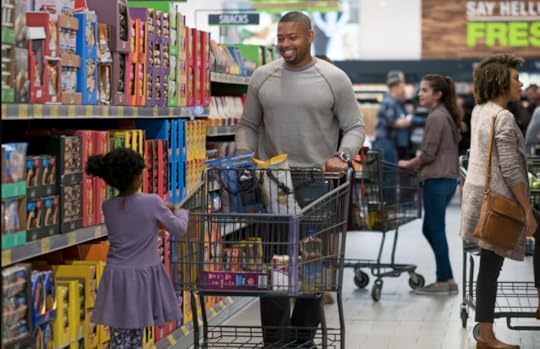
ALDI
Add in the online merchants that specialize in making their own lower-priced alternatives to national brands, such as Brandless and Thrive, and private label is not only accepted, but sought-after. Spending at Brandless, founded in 2017, rose 413% in its first year.
Re-Branding The Shopping Trip
None of these developments catches the makers of big brands by surprise. Manufacturers know on-shelf performance determines their fate with grocery landlords, so they have been promoting one-of-a-kind capabilities, trust and innovation for years, right next to their private-label competitors. But they also are looking outside the store. Here are a few opportunities shoppers could expect.
Lucky charms. From Oreo to L’Oréal, national brands are offering more incentives for shoppers to seek out their products. The 2018 #MyOreoCreation contest sent prizes, from cookies to movie packages, to those who voted on flavors submitted by cookie fans (the winner was Cherry Coke). L’Oréal’s Worth Rewards program gives customers five points for every dollar they spend either by uploading receipts, linking memberships to a retailer’s loyalty card and/or by participating in online brand activities. And candy company Hershey offers Hershey Retailer Rewards to store owners, to encourage them to carry its line in return for rebates, category insights and exclusive new-product information.
Kraft services. Big brands own a lot of special technology, and many are using their expertise to parlay it into services as well as products. Procter & Gamble has been testing this model for years with its Mr. Clean Car Wash. Now, P&G is expanding its Tide pickup and delivery laundry service to 2,000 locations nationally, including at its already-operating Tide Dry Cleaners spots. Kraft’s cooking school, on YouTube, promotes its own products while sharing short recipe videos smartly targeted to its multi-tasking, middle-income customer base (as evidenced by its Easy Unicorn Cake).
Double stuff. In some aisles, shoppers will simply get more choices, but not necessarily for long. Private label brands are creeping into even loyalty-heavy categories such as detergent and cereal, giving shoppers more options to compare (and retailers more options to increase profits). However, added choice makes it hard for shoppers to find their preferred labels and could force them to either substitute brands or spend more time shopping around. In the end, retailers will pare down selections by using their data analytics to swap out lower-performing products for better ones.
Freebie Febreze. In addition to retailers, product makers sell to institutions and organizations such as colleges and hotel chains. Red Bull found riches in university fandom by turning its alert young customers into brand ambassadors, giving away Red Bull drinks and apparel so its logo is visible all semester long, wherever the wearers go. These partnerships will likely get creative: It’s not outlandish to imagine Febreze in airport frequent flyer lounges to freshen suitcases, or Nature Valley granola bars in McDonald’s Happy Meals.
Garniering more use. Expect brands to sell their necessity by promoting multi-purpose properties and new uses, based on their explicit formulations and technologies. Cetaphil sells daily moisturizer with sunscreen and cosmetic tint with the trusted backing of the brand name; Garnier Fructis Triple Nutrition Marvelous Oil can be used in the hair five ways — before, during and after shampooing. And probiotics are popping up in everything. By loading up on functionality, brands offer more problem-solving and ease per dollar while cashing in on credibility.
The giant takeaway for shoppers is their favorite big brands won’t go away. What may change is which brands they choose to make their favorites. But these choices will be guided by innovation, performance and price — good things for all involved. A high Tide, or Aldi-branded tomato sauce, will raise all shipments.
This article originally appeared in Forbes . Follow me on Facebook and Twitter for more on retail, loyalty and the customer experience.
March 11, 2019
Will Walmart’s “Hello” to Baby Deliver? 4 Grownup Lifestyle Changes It Reveals
Walmart doesn’t just want the last word in affordable-premium products; it wants the first word. And that word is “goo-goo.”
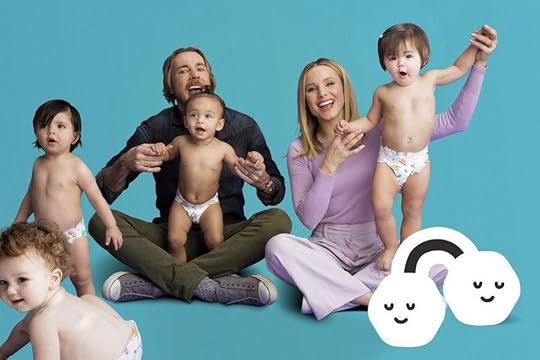
IMAGE: WALMART HELLO BELLO
With the aid of a celebrity partnership, Walmart is using its price-reducing scale to appeal to cost-conscious parents who do not want to scrimp on high value. The superstore chain has aligned with the likeable acting couple Kristen Bell (“The Good Place”) and Dax Shepard (“Parenthood,” “The Ranch”) on an exclusive line of plant-based baby-care products, from diapers to detergent, called “Hello Bello.”
In doing so, Walmart is acknowledging a broadening demand for more transparency in ingredients. The global market for natural and organic personal-care goods is projected to escalate to nearly $30 billion by 2028, from $12.1 billion in 2017, according to Persistence Market Research. North America accounts for more than a third of that spending.
That’s a lot of hustle in what not too long ago was considered a niche market, and Walmart apparently recognizes that challenge as well: By exclusively partnering with Bell and Shepard, parents themselves, Walmart is betting not just on the couple’s co-owned brand, but on the power of having their friendly and credible faces on the brand.
But more to the point, by tapping specifically into the natural-ingredients market for baby care, Walmart acknowledges not simply the power of life-stage shifts, such as having a baby, but of four lifestyle shifts that could permanently alter how retailers merchandise in years to come.
Walmart’s Baby Boon
That Walmart selected baby products for its new natural line is elementary. Babies are delicate and should get safer products. The trick has been making them affordable, which Walmart has the scale to accomplish. The 10 Hello Bello products are priced from $1.88 to $23.94, with most less than $8.
As Shepard stated in the joint press release: “Parents shouldn’t have to choose between what’s good for their baby and good for their budget.” (Hello Bello’s line includes diapers, wipes, shampoo and body wash, bubble bath, baby lotion, diaper rash cream, laundry detergent, hand sanitizer, sunscreen and bug spray.)
To the business point of it: If Walmart can win the trust of parents at the new-life stage of their families now, it is more likely to maintain that trust for the lifetime of those customers, as well as their progenies.
To add urgency, there’s mounting competitive pressure to win shopper loyalty at birth. In January, Target expanded it private-label line of baby-care products, Cloud Island, to include competitively priced diapers, wipes, toiletries and other essentials, some with plant-based ingredients.

WALMART HELLO BELLO
Which is likely why Walmart has in the past 18 months expanded its baby assortment, adding 30,000 items. It also remodeled the baby departments in more than 2,000 stores and added a microsite on Walmart.com that helps parents shop nursery designs by style, from classic pink to mid-century modern.
Rattling Lifestyle Changes
By investing in a “head-to-butt-to-toe” line of safe-ingredient baby goods, Walmart is seeking cradle-to-maturity shopper loyalty. In assuring that, it appears to be responding to four essential lifestyle shifts many consumers are making.
A shift to a sustainable babies. In just a few months, newborns could require 10 times their weight in spending, and parents increasingly are directing their dollars toward “cleaner” products. The size of the global organic baby food market alone is projected to reach $11 billion in 2024, from $6 billion in 2018. That closely matches the size and projected increase of the overall S. baby-care product market — $6 billion in 2018 to $11 billion by 2025, cites Statista. According to Hello Bello’s website, it uses “as many organic ingredients as we can without driving up the final cost of the products we make.”
A shift to niche brands that mean something. Transparency extends to mission. Responsible consumerism is expected to be among the big retail trends in 2019, as the expansion of digital and in-store shopping options enables people to more easily locate brands that help them make better, more responsible choices, according to a report in com. Consumers ages 23 to 38 in particular are more likely to purchase cause-related products — 37% vs. 30% of older shoppers.
A shift in influencer credibility. Social media has enabled most anyone with confidence and the ability to take a great selfie to become an influencer. However, just 3% of consumers are more likely to purchase a product based on celebrity, according to new research by Collective Bias, an influencer marketing firm. Bell and Shepard are the kind of couple that could redefine celebrity influence. They are not mega-stars, not overly glamorous and they frequently share the foibles of marriage while poking fun at each other. This makes them desirably relatable, which Walmart evidently has spotted.
A shift in expectations to “affordable premium.” Thanks in part to digital startups such as Brandless, which sells natural-ingredient consumer products at low prices, shoppers are learning they can indeed get premium products at dollar store-near prices. But Brandless, which once priced everything it carried at $3, in January bumped its prices after it too entered the baby-care category. Walmart may have already been developing the Hello Bello line with Bell-Shepard when Brandless introduced its pricier baby products, but it certainly makes for a fortuitous introduction.
Shepard even hints that Hello Bello would never have seen the light of morning without Walmart. “We couldn’t ask for a better exclusive retail partner,” he stated in the press release.
The more important partner, however, is the customer. If Walmart can get the first word right, it might have the last word in shopper loyalty, to well beyond parenthood.
This article originally appeared in Forbes . Follow me on Facebook and Twitter for more on retail, loyalty and the customer experience.
March 6, 2019
Pet-Fatuation Is In Store: How Saks, Bed Bath & Beyond and Cannabis Are Capitalizing
Meet Champ. He has the power to determine the house his owners live in, but he doesn’t know how to roll over.
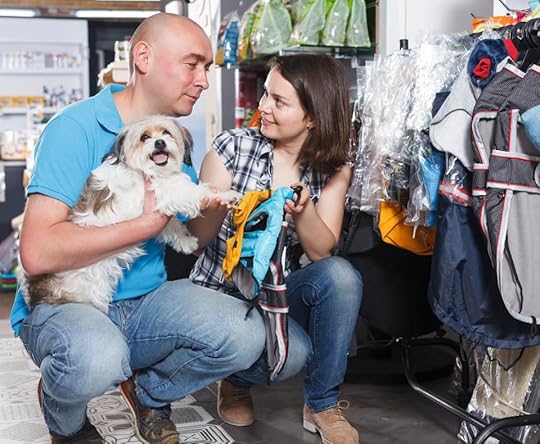
Image: Getty
Champ is, of course, covered in fur — and in purchase influence. Pets are wrestling control over larger parts of household budgets, along with owners’ hearts, as demonstrated this recent Valentine’s Day. Shoppers individually were projected to increase their Valentine’s pet spending by nearly 27% over 2018, to $6.94 from $5.50 in 2018, according to a survey by the National Retail Federation. In all, one in five consumers said they would buy something for a pet, translating to a total of $886 million in sales.
But Valentine’s Day is just one measure of how willing consumers are to indulge their pets through their wallets. Americans are estimated to have spent more than $72 billion on their pets in 2018, compared with $43 billion 10 years earlier, the American Pet Products Association (APPA) reports. That influence extends from chew toys to domiciles — nearly 80% of millennial homebuyers said they would pass on a house if it didn’t meet the needs of their pets.
This clout is expected to strengthen as pets become more widely accepted not merely as extensions of families, but as child replacements that are integral to their owners’ lifestyles. From nutrition-specific pet foods to doggy cams to app-connected food bowls, pet-related products are feeding an industry with sales that are more than three times greater than children’s toys ($21.6 billion in 2018).

Freddie, rocking a new sweater, is a good example of how pets influence shopping behavior. Image: smooth-studios.com.
More Bark Than Bikes
Sales of pet toys, meanwhile, are rising, reflecting the pet population. The number of pet-owning households in the U.S. now exceeds those with children — 84.6 million versus 52.8 million, according to the APPA. In many of these households, owners want their pets to have the same products children would enjoy. In short, pets are increasingly capturing the love once reserved for kids.
Few retailers are overlooking the opportunity. Saks Fifth Avenue sells “smart” pet bowls that track consumption, polka-dotted pet sneakers and Tanqueruff Gin plush dog toys. Zulily’s pet supplies and accessories page includes pet-pouch hoodies, a Steelers Pittsburgh collar bandanna and pet umbrellas. And Home Depot sells horse shelters along with dog houses and cat climbers.
Meanwhile, more big chains, including Barnes & Noble, Bath & Body Works and Macy’s, invite dogs into their stores to browse with their owners, recognizing it could increase trip numbers.
Put It on My Tabby: Pet Goes Upscale
But it’s in more specialized products and services where pet potential may be greatest for retail brands. Among the spotted trends:
Well-heeled spa services. From trendy cuts and “paw-dicures” to blueberry facials and massages, spa services are being tailored for pets. This is a decidedly upscale market — at Miami’s Ocean Bal Harbour condominiums, residents treat their privileged pups to a five-star pet-grooming spa that features deep fur conditioning, de-shedding treatments, cooling eye masks and “Yappy Hour.” At the Spa Paws Hotel in Fort Worth, Texas, cats (and dogs) are chauffeured to sunlit rooms, where they can be treated to feel-good massages and freeze-dried salmon. And Dogtopia offers daycare and spa services in 87 locations across the U.S. and Canada.
Pet-friendly cannabis. Some companies, such as Pet Releaf in Littleton, Colorado, market THC-free cannabis for pets as an aid for anxiety, seizures, arthritis and other pain. The American Veterinary Medical Association has asked the Drug Enforcement Administration to declassify marijuana as a drug, but be warned, the FDA has not yet evaluated or approved these products.
Continual surveillance. Because pets replace babies, their owners are more likely to worry about them when they are apart. A regular nanny cam could do, but then there’s the app-connected Furbo camera, which enables parents to talk with their pups and release treats. Furbo offers a subscription-based nanny service with 24-hour cloud recording, activity alerts and compiled highlight videos. Furbo uses artificial intelligence, so its ability to recognize unusual behaviors sharpens with time.
Life-extending products. On average, an indoor cat can live to be 18 and a medium-sized dog to 11, but owners often are willing to prolong those years when they can. As a result more retailers are carrying pet strollers and joggers, ramps, supplements and specially formulated foods, even for birds. The site Handicappedpets.com sells nothing but harnesses, diapers, blind halos and other products to help older or handicapped pets live comfortably.
Doggie (and kitty) dental. Ten years ago pet owners might have laughed at the thought of brushing Fluffy’s teeth, but now people are building the task into their routines, and budgets. The global pet oral care market is expected to grow by 6.2% from 2017 to 2022, to $2.2 billion. Retailers are responding in a big way: Look up dental treats on pet-catering site Chewy.com and more than 900 options appear.
Tattoo chew. Though outlawed in some states, including New York, groups including PETA support pet tattooing for tracking and identification purposes. That being said, some owners have their pets — cats and dogs, in particular— tattooed for aesthetic expression.
The roles our domesticated critters play in our purchase decisions appear to be on a powerful curve, aided in large part by education and social media. Even awkward-looking pets like Lil Bub the cat can be stars (you can buy the Lil Bub plush toy at Bed Bath & Beyond).
Which means a shopper doesn’t even have to own a pet to be influenced by one. For those who do, Valentine’s Day may be over, but St. Patrick’s Day is right around the corner. And heck, you can start planning for Halloween now.
This article originally appeared in Forbes . Follow me on Facebook and Twitter for more on retail, loyalty and the customer experience.
February 27, 2019
Amazon’s New Loyalty Program: 5 Reasons Amazon Moments Will Change How You Shop
One of the greatest challenges in retail is providing what shoppers consider mutual value: Selling a product or service that the customer thinks is worth the time, money and data exchange. Amazon is trying to crack that challenge, however, and it is doing so with one of the most well-exercised models out there — rewards.

photo: Getty
Amazon’s new loyalty initiative, Amazon Moments, is designed for vendors, but its moment of truth depends on shopper reaction. After about 18 months of testing, the truth is coming out: The vendors that have used it seem to like it so far. But the concept’s real shelf life, the one with shoppers, depends on what they stand to gain in the long run.
Loyalty programs are growing massively as companies seek more ways to engage customers. According to LoyaltyOne’s Loyalty Big Picture Study, scheduled for release by March, the global loyalty industry is estimated to be worth $74 billion, of which $42 billion is loyalty programs, providers and platforms. The study also finds that companies invest upward of 2% of their sales in reward initiatives.
It’s not surprising, then, that rewards have to work harder to distract shoppers from their digital-enabled routines — 80% of consumers will buy whatever they need at the moment they see it, regardless of where they are, research firm WSL Strategic Retail reports.
If Amazon Moments wants to capture the consumer’s attention, it has to offer not only a different reward-earning model, but a literally different way of approaching shoppers all together. As in: Don’t expect them to do anything proactive, just thank them for merely showing up.
Rising Boats, Sevenfold Sales Gain
Amazon Moments attempts to remove the work for shoppers by first eliminating the work for its vendor brands: it provides the marketing platform, an online console for budgeting and managing each campaign, and reward fulfillment.
Essentially, these are the costlier operations of a reward program. Moments was developed so Amazon vendors could focus instead on the kinds of actions they want their shoppers to engage in, such as using an app or spending a certain amount of money. The vendor just has to determine which actions generate the desired results (revenue or word of mouth) and the rewards, physical or digital, it will give in return.
Bryan Pearson's Blog
- Bryan Pearson's profile
- 4 followers



